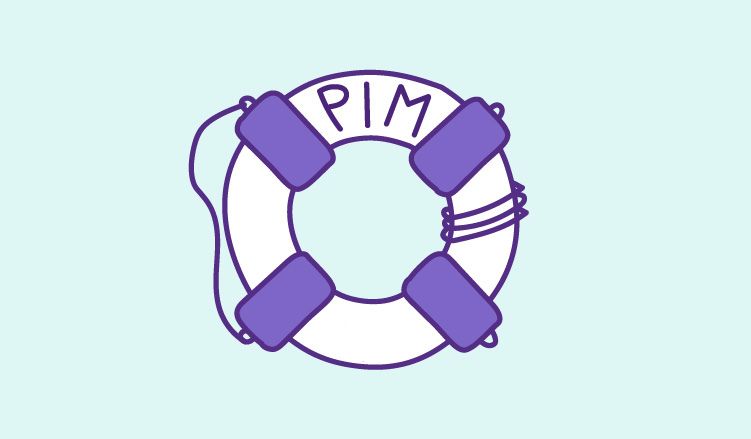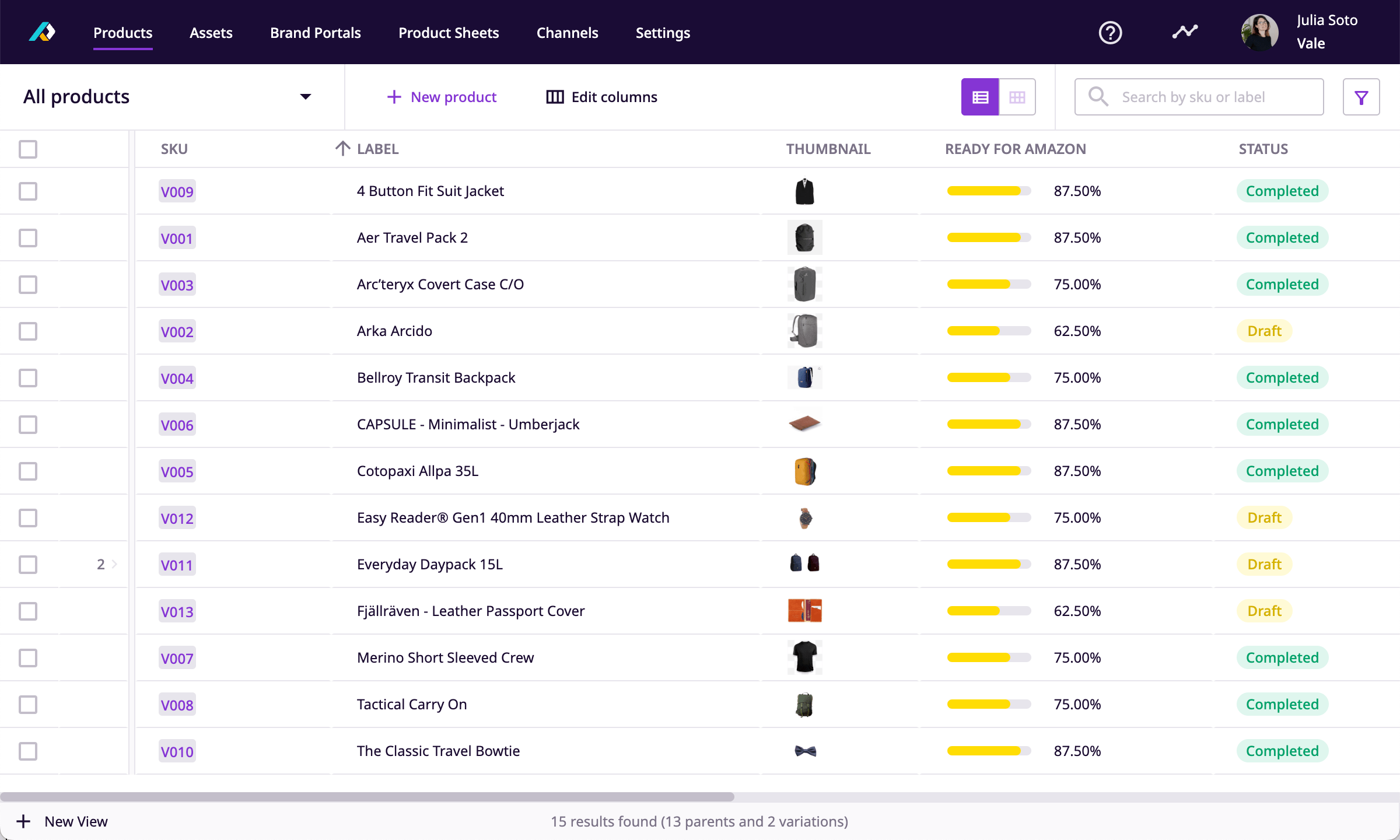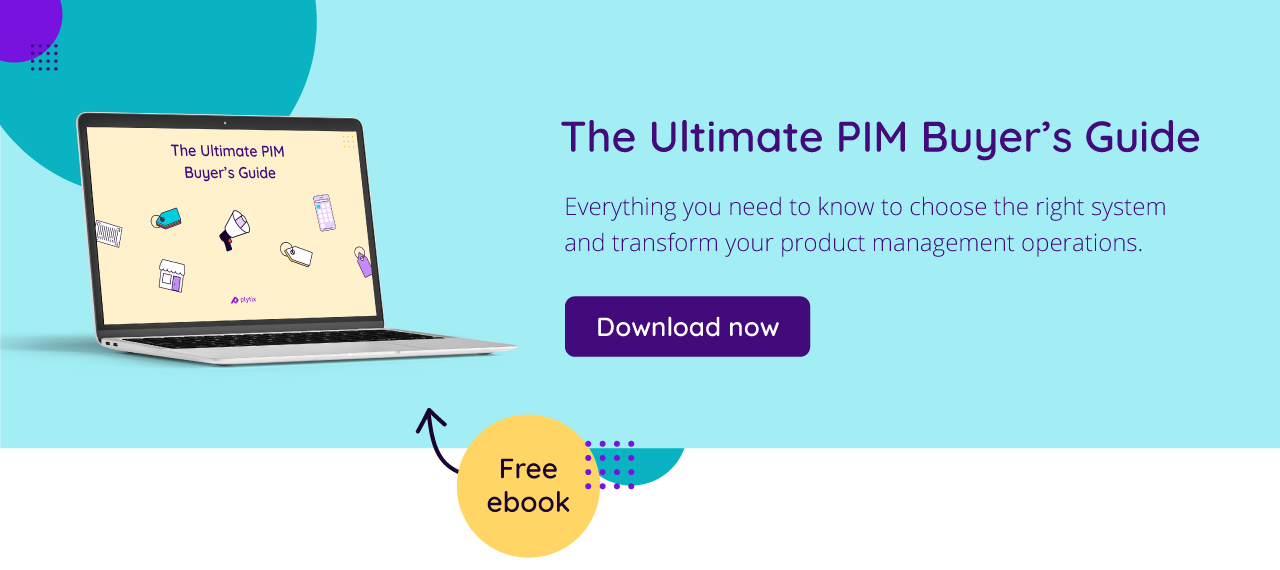
Keep the good stuff coming
Subscribe to our blog newsletter and get monthly content that helps you manage product data smarter.
No spam. Just real value.
When you first start a business, the last thing on your mind is how you’ll keep track of inventory, manage customers and suppliers, and organize all your documents. It’s only natural that as your business grows, so will the mountain of paperwork it creates.
You know you need something to help keep things organized, but what? If you feel like you’re drowning in paperwork every time you sit down to send out your newest product sheet or sort through all those invoices and purchase orders, it’s time to get Product Information Management (PIM) software.
PIM software streamlines everything from centralizing, managing, and distributing product information across an organization and its various sales channels, such as websites, marketplaces, print catalogs, and point-of-sale systems.
So before things get out of hand, here are 10 signs that your business needs a product information management system:
Sign 1: Inaccurate or inconsistent product data across channels and systems
Inaccurate or inconsistent product data across channels and systems refers to a situation where different departments, systems, or sales channels within an organization have different versions of product information that do not match.
This can lead to confusion and errors, such as incorrect pricing and product descriptions or outdated product information. When product information is not consistent across all channels, it harms customer experience—which later results in lost sales, decreased customer loyalty, and a damaged reputation.
Inconsistent product data can also cause operational inefficiencies and increase the time and cost of managing product information.
A PIM system can help to solve these problems by centralizing and standardizing product information, ensuring that all channels, systems, and everyone involved has access to the same, accurate information.
Sign 2: Employees spend too much time on basic tasks
When you have to spend hours every week manually entering data, or you get tired of employees spending too much time on basic tasks, it’s a sign that you need PIM.
With a PIM system in place, employees can spend less time on manual data entry, data updating, and data reconciliation across multiple systems.
Here are some specific ways a PIM system can help:
- Centralized product data repository: A PIM system provides a centralized location where all product information can be stored and managed, reducing the need for manual data entry and increasing accuracy.
- Automated workflows: PIM systems often have automated workflows that can be used to streamline the product data management process and eliminate manual data updating.
- Improved data accuracy: A PIM system can enforce data standards and consistency, helping to improve data accuracy and reduce errors.
- Easy data distribution: With a PIM system, employees can quickly and easily distribute product information to multiple channels, reducing the time and effort required to manage product information.
- Better data collaboration: PIM systems can improve internal communication and data collaboration between teams by providing a single source of truth for product information and enabling teams to work together more efficiently.
If you find yourself spending too much time on basic tasks, it could be because your employees are using inefficient systems. PIM software gives employees access to all the information they need without having to manually enter data over and over again.
This saves employees time and allows you to scale your business without having to hire more employees.
Sign 3: Your product has so many versions and variations
If your product has many different versions and variations, your team likely spends a lot of time on product variations. Product variations include things like color, size, material type, and so on.
A PIM system provides a centralized location where all product information, including product variations, can be stored and managed in a consistent and organized manner.
This way, employees can quickly access and view all relevant product information for each version or variation of a product, improving decision-making and reducing errors.
Sign 4: You find yourself losing track of important documents
If you lose track of important documents, like your terms-and-conditions-related documents and product descriptions, it’s time to put them into a PIM.
In a PIM, you can store all your important documents and easily search for them whenever you need them.
Product information management software also enables you to attach documents to products, so they are always available when you need them. If you find yourself losing track of important documents, it might be because you’re storing them in an old-fashioned file cabinet.
So, by all means, it allows you to store documents digitally and search for them much more quickly than if they were sitting in a file cabinet.

Sign 5: Inconsistent imports of product information
Typically, product data is sourced from various manufacturers, distributors, suppliers, warehouses, translation agencies, legacy systems, procurement systems, photographers, marketing agencies, data suppliers, and Content Delivery Networks (CDN).
These sources often provide product data in different systems, protocols, and file formats and may still send the information through emails or faxes.
From all of these, there are tons of a wide range of product data types, which results in messy retrieval and manual management processes.
Product Information Management (PIM) systems can help businesses address this challenge by providing a centralized repository for product information, where all data can be standardized and validated before it is published.
Sign 6: Customers struggle to understand your products
If your customers struggle to understand your products and what they do, it’s time to get a PIM.
The PIM system provides comprehensive and easy-to-understand product information, improving the presentation of the information and supporting multiple languages. All of these will lead to improved customer engagement and increase the likelihood of making a sale.
- Detailed product information: PIM stores detailed product information, such as product descriptions, specifications, images, and explainer videos, which can help customers to better understand the products and their features.
- Improved presentation: PIM presents product information in an organized and visually appealing manner, making it easier for customers to understand and compare products.
- Multi-language storage: PIM stores information in multiple languages, making it easier for businesses to reach a global audience and provide product information to customers in their native or preferred language.
Sign 7: You struggle to meet customer expectations
In today's fast-paced and highly competitive market, businesses must be able to meet customer expectations for accurate and up-to-date product information. Failing to do so can result in lost customers and reduced sales—meaning it negatively impacts the overall success of the business.
PIM systems help businesses to address this challenge by centralizing and standardizing product information, ensuring that it is accurate, up-to-date, and consistent across all sales channels. This helps businesses to avoid confusion and frustration among customers who may encounter conflicting information about products.
PIM also helps you with:
- Improved customer experience: The system provides customers with detailed and comprehensive product information, such as product descriptions, specifications, images, and videos, which can enhance the customer experience and increase their likelihood of making a purchase.
- Consistent branding: It makes it much easier for you to maintain consistent branding and messaging across all sales channels, which can improve brand recognition and credibility with customers.
Sign 8: Your business grows too quickly to handle
If your business is growing too quickly for you to handle and you don’t know where to begin, it’s another sign that you need a PIM. When a business grows too quickly, it can become challenging to manage the increasing volume of product information, especially if it is spread across multiple systems and channels.
PIM comes in handy for businesses that are struggling to handle rapid growth by providing scalable and efficient product data management processes.
A PIM system provides the necessary infrastructure to manage the increasing volume of product information. It can handle large amounts of data and provide a centralized location for all product information, making it easier to manage and update.
The system can be configured to accommodate the specific needs of a growing business, and as the business grows, the PIM system can be scaled to accommodate the increased volume of product information.
In addition, PIM systems often use cloud-based technology, which makes it possible to scale the system as needed without the need for expensive hardware upgrades.
Sign 9: You don’t have a consistent way to manage your pricing
Even if your products are listed with prices, there is no guarantee that they are accurate. By using a PIM system, businesses can improve the accuracy and speed of their pricing updates, reducing the risk of pricing errors and ensuring that customers have access to accurate and up-to-date pricing information.
Sign 10: Your current PIM just isn’t getting the job done
Remember that we live in a fast-moving world, where everything can shift in a second. What tools work today might not work as effectively next week. If you find yourself constantly frustrated with your current PIM software, it might be time for a change.
Product information management systems are designed to grow your business. They have the flexibility to adapt to your needs as you scale up and down. In addition to being flexible, the best PIM software is also easy to use. It also allows you to quickly create new products and add new vendors without struggling against a difficult user interface.
So, if your current PIM isn’t doing all of this, then it’s a sign that you need a new PIM provider.
Here’s how:
- Centralized price management: PIM provides a single location where prices can be managed and updated, making it easier to keep track of pricing changes and ensuring that all systems have access to the latest pricing information.
- Automated price updates: PIM automates the process of updating prices, reducing the need for manual data entry and minimizing the risk of errors or inconsistencies.
- Real-time price updates: PIM provides real-time updates to pricing information, ensuring that customers and other stakeholders always have access to the most up-to-date pricing information.
This can help businesses better meet customer expectations and improve their competitiveness in the market.
Summing up
A good PIM can help your business stay organized and efficient. When you first start your business, it’s easy to neglect the importance of organization. That’s why it’s important to recognize the signs that your business needs a PIM.
When you’re drowning in paperwork and data entry, it’s clear that it’s time to get a PIM. These systems help you with inaccurate product data, inconsistent pricing, product descriptions, and much more. In doing so, they help you avoid costly mistakes and streamline your business operations.

Andre Oentoro
Andre Oentoro is the founder of Breadnbeyond, an award-winning explainer video company. He helps businesses increase conversion rates, close more sales, and get positive ROI from explainer videos (in that order).

What if your product data actually worked for you?
We’ll show you how Plytix helps you stop fixing data—and start using it.
Related posts
Keep the good stuff coming
Subscribe to our blog newsletter and get monthly content that helps you manage product data smarter.
No spam. Just real value.







Think others should see this?
Go ahead and share it.